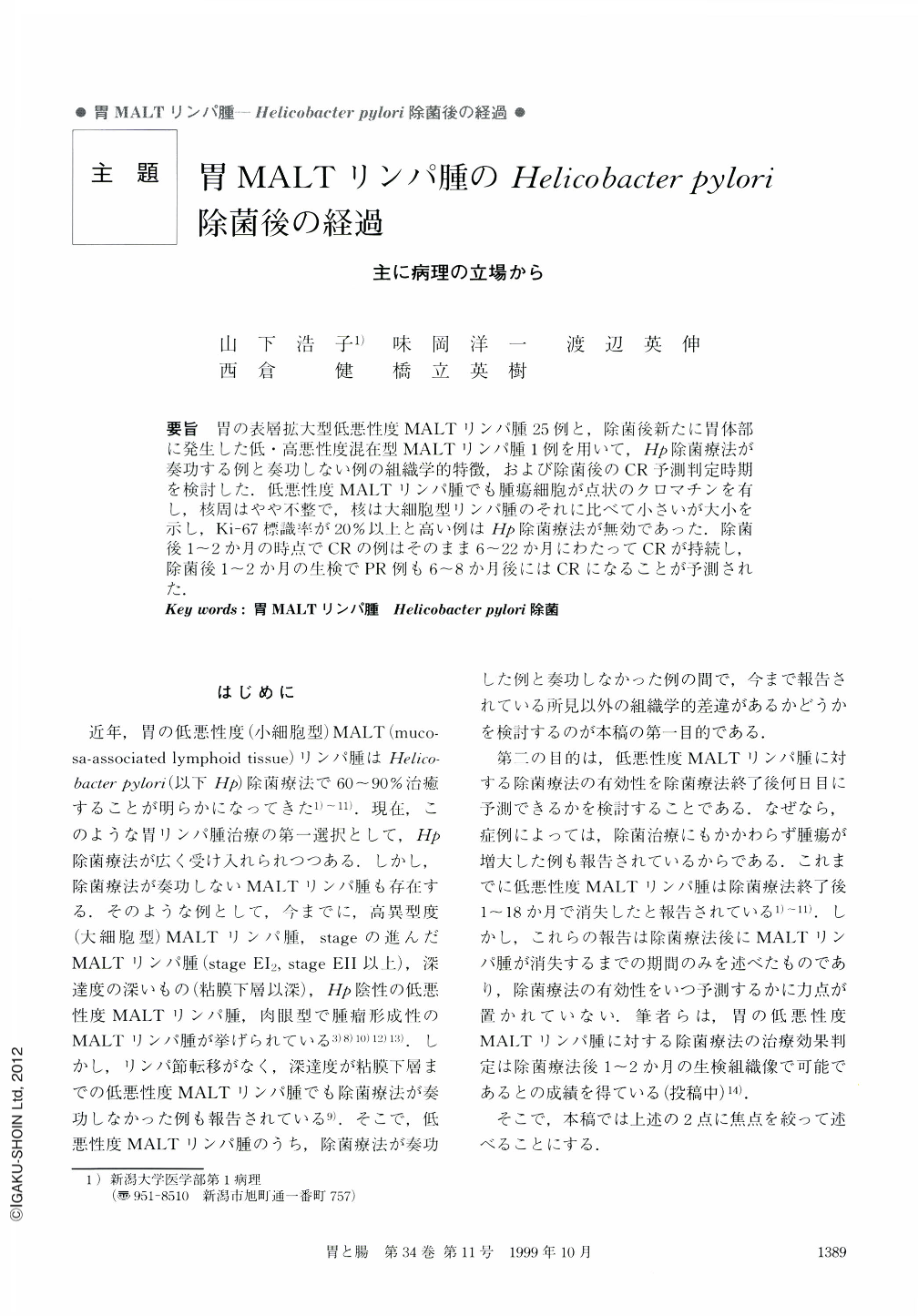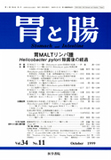Japanese
English
- 有料閲覧
- Abstract 文献概要
- 1ページ目 Look Inside
要旨 胃の表層拡大型低悪性度MALTリンパ腫25例と,除菌後新たに胃体部に発生した低・高悪性度混在型MALTリンパ腫1例を用いて,Hp除菌療法が奏功する例と奏功しない例の組織学的特徴,および除菌後のCR予測判定時期を検討した.低悪性度MALTリンパ腫でも腫瘍細胞が点状のクロマチンを有し,核周はやや不整で,核は大細胞型リンパ腫のそれに比べて小さいが大小を示し,Ki-67標識率が20%以上と高い例はHP除菌療法が無効であった.除菌後1~2か月の時点でCRの例はそのまま6~22か月にわたってCRが持続し,除菌後1~2か月の生検でPR例も6~8か月後にはCRになることが予測された.
We studied histological features of superficlal spreading low-grade MALT lymphomas of the stomach that show complete regression (CR) after eradication of H. pylori, and when we can predict CR after H. pylori eradication. The material was 25 cases of low-grade MALT lymphoma, and one case of antral low-grade MALT lymphoma which revealed a new formation of mixed low- and high-grade lymphomas in the body after CR of antral lesions. Low-grade MALT lymphoma in no response to eradication showed irregular contour of nuclei with dotted chromatin, various in size within small and medium-sized nuclei, and 20% or more of Ki-67 labelling index. CR cases at 1~2 months after eradication have been in CR status even at 6~22 months. Partial regression cases at 1~2 months after eradication also showed CR at 6~8 months after eradication. These results suggest that CR of low-grade MALT lymphoma can be predicted at 1~2 months after eradication therapy, by checking histological changes of MALT lymphoma cells.

Copyright © 1999, Igaku-Shoin Ltd. All rights reserved.


